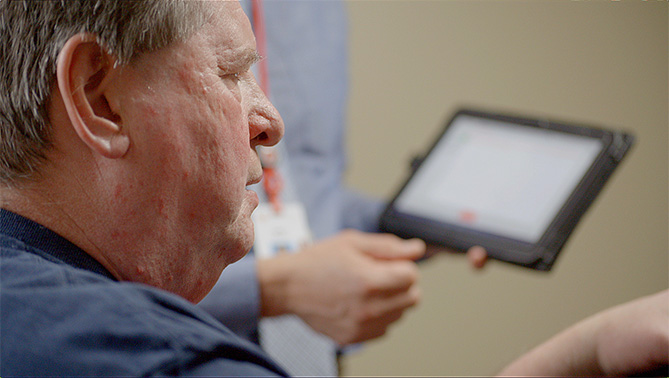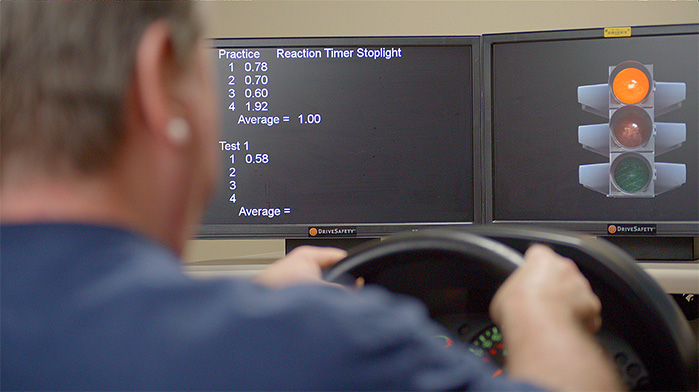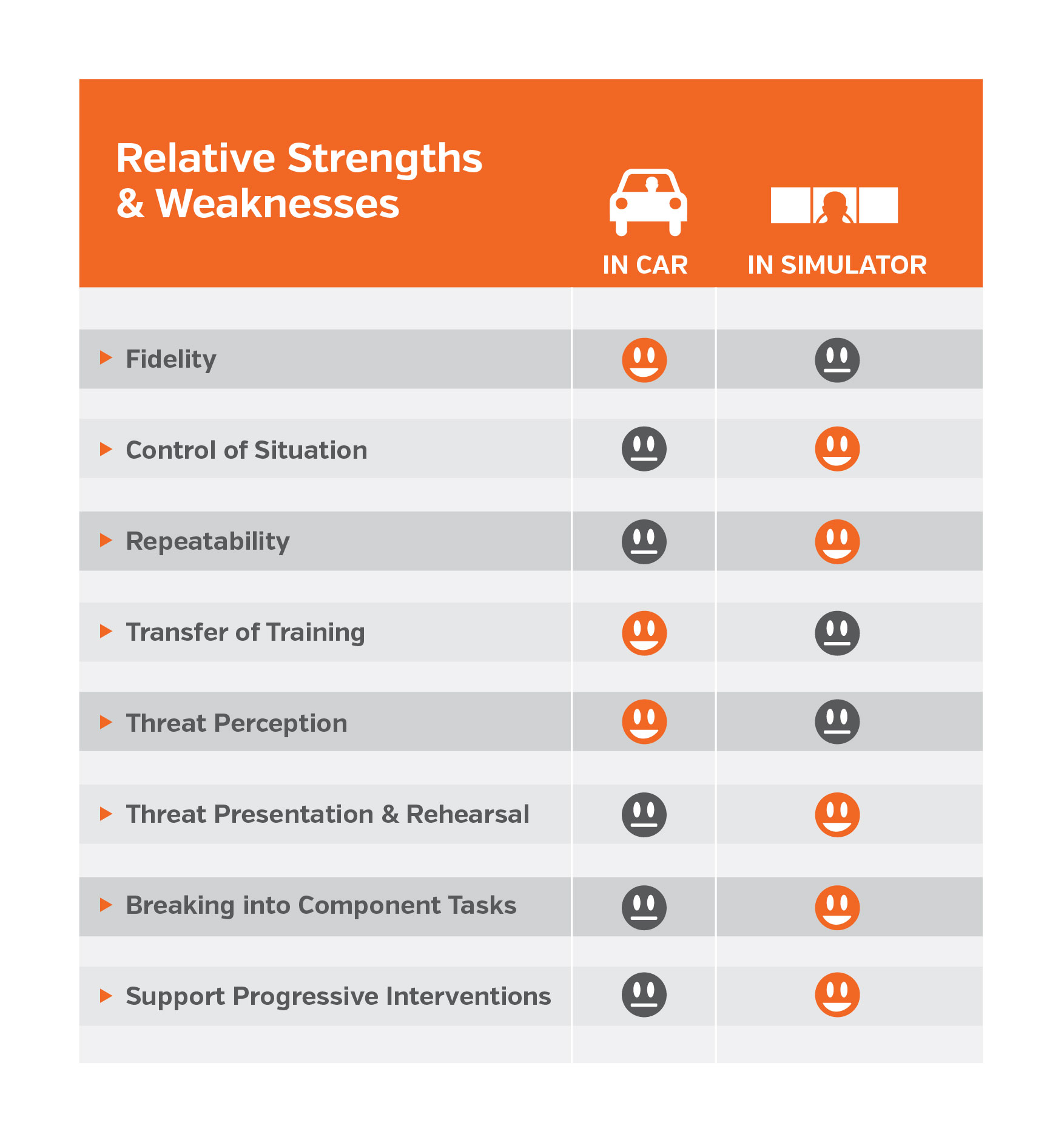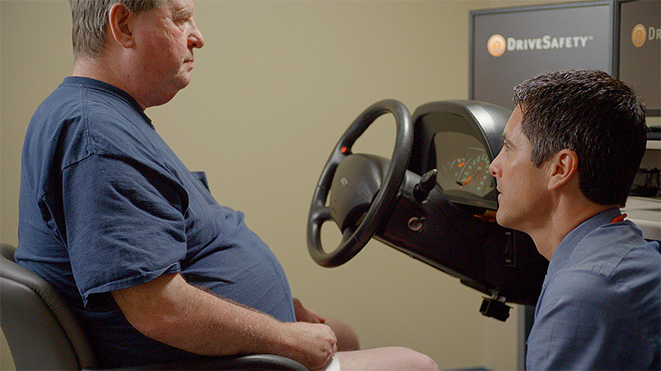DRIVER EVALUATION AND TRAINING

EVALUATION AND REHABILITATION
OF FUNCTIONAL ABILITIES
Sensory, cognitive and motor abilities are required for not only driving, but also for many other critical daily living activities. DriveSafety simulators can be an invaluable resource for clients and feature the acclaimed SimClinic® library of clinical activities. Access to this program supports progressive functional exercises that target specific abilities. Such evaluations and interventions may fall into the occupational and/or physical therapy and rehabilitation codes.
1. SENSORY
Sensory-related functions that include perception, information processing, visual-motor integration, and proprioception are measured and exercised using interactive tools.
2. COGNITIVE
Important cognitive skills, such as divided and selective attention, working memory, problem solving, and anticipatory thinking, can be evaluated and strengthened using the tools provided through DriveSafety simulators.
3. MOTOR
Motor function affects a client’s ability to drive. Therapists use DriveSafety simulators to rehabilitate these motor functions with interactive exercises and driving scenarios. These activities target clients’ physical strength, reaction time, control, endurance, and neuromuscular reeducation of movement and coordination.

DRIVING SKILLS
1. BASIC VEHICLE CONTROL SKILLS
With realistic automotive controls and driver feedback, DriveSafety simulators provide an excellent platform for exercise and evaluation of driving skills. This begins with a focus on basic vehicle control, including the driver’s use of primary controls (steering wheel, gas and brake pedals, gear-select, etc.), and simple driving skills such as lane keeping, changing lanes, and speed management.
2. PROGRESSIVE TRAINING & INTERVENTION
Exclusive to DriveSafety simulators is the SimClinic™ library featuring dozens of purpose-built exercises and driving scenarios that can help Driving Rehabilitation Specialists deliver progressive training and/or interventions that guide clients step by step from basic controls to more demanding roadway situations and driving tasks.
3. ADVANCED DRIVING SAFETY & PERFORMANCE SKILLS
DriveSafety simulators and SimClinic™ scenarios include realistic and challenging drives that facilitate the rehearsal and testing of advanced safety skills, such as situational awareness, defensive driving and hazard detection and response.

STRENGTHS AND WEAKNESSES OF SIMULATION
1. LIMITATIONS
Fidelity
Limitations of driving simulators are due mainly to limitations in the fidelity of their models of the real world and the queuing system used to present those models to the driver. Such may include imperfections in the models of the environment, roadway, vehicle dynamics and entity behaviors (such as other traffic), as well as limitations in the quality of the perceptual cues provided by visual, audio, haptic (control loading), vibration and motion subsystems. While the fidelity of simulations has increased dramatically in recent years, driving a simulator is still not the same as driving a real car.
2. STRENGTHS
Simulation offers several benefits including a safe, controlled rehearsal/practice space, the ability to break a complex task down into its component parts and focus on specific skills, repeatability, a high level of engagement and interaction, objective performance measures, presentation of rare or hazardous events, progressive interventions, and a bridge from conceptual learning to behind-the-wheel performance skills. Simulation allows for intervention in several health care disciplines, including Occupational Therapy, Driving Rehabilitation, Physical Therapy, Kinesiotherapy, Speech Therapy, Neurological Rehabilitation, Clinical and Neuro-Psychology and Autism.
3. ADDITIONAL BENEFITS
An interactive simulation system that is done well can provide therapists uniquely powerful tools for exercising a client’s functional abilities in several areas, most notably in the very rich ground of:
> vision and visual perception
> cognitive functions
> motor control and other physical functioning


